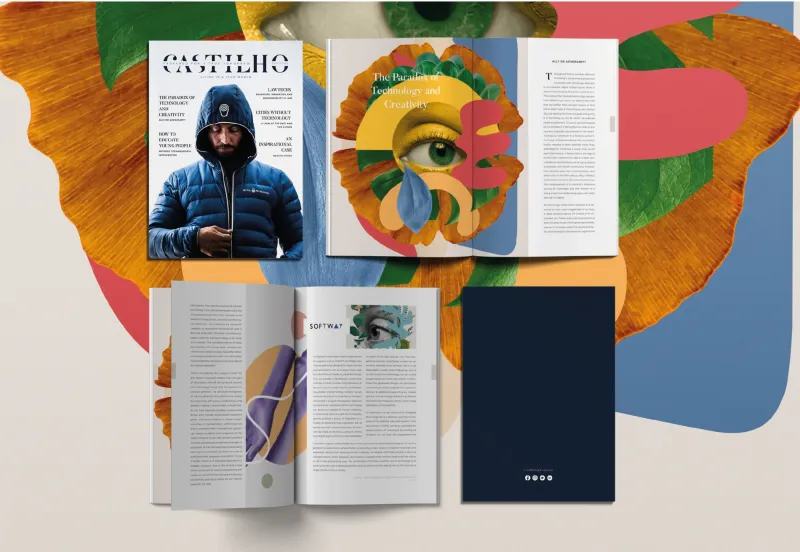Ally or Adversary?
Throughout history, we have observed humanity’s somewhat paradoxical connection with technology. Although it is a constant object of fascination, there is always a lasting sense of caution attached to it. This residual fear towards technology appears to be deeply ingrained in our psyche. We must look no further than ancient Greece to find the ill-fated case of Prometheus, who defied Zeus by stealing fire from the gods and giving it to humanity, an act for which he suffered severe punishment. Or Icarus, who exhilarated by the sensation of flying, flew too close to the sun and tragically plummeted to his death. Turning our attention to a biblical account, the Tower of Babel illustrates how humanity’s hubris resulted in their downfall when they attempted to construct a tower that would reach the heavens. In Jewish folklore, the legend of the Golem recounts the tale of a rabbi who created a humanoid being out of clay to defend and protect the Jewish community, however, the creature grew too uncontrollable and destructive. In the 19th century, Mary Shelley’s Frankenstein comes to life: a story that portrays the consequences of a scientist’s obsessive pursuit of knowledge and the creation of a being made from stolen body parts, ultimately leading to tragedy.
As technology continues to advance and becomes an ever-more integral part of our lives, it raises questions about the impact of its unchecked use. These cautionary tales remind us that with great power comes great responsibility, and we must always weigh the potential benefits of technological advancement against the risks it poses. This raises the question of whether technology is the ultimate temptation and one of humankind’s greatest tests. However, as we delve into these stories, we notice another recurring theme - the characters are using their creativity to exceed the limitations of what is deemed achievable. Does this connection between creativity and technology truly come as a surprise? The interdependence of these two domains has always been complex and intertwined. Creative pursuits have often driven technological progress, and in turn, technology has provided the necessary resources and tools for creative expression.
When considering the subject matter for this article, it became evident that the topic of discussion should be centered around the technology trend that has seized our society’s attention - AI (artificial intelligence). AI has the potential to transform our society by improving efficiency, productivity, and decision-making in various fields. In healthcare, AI can help diagnose diseases, develop new drugs, and provide personalized treatment plans, ultimately leading to better health outcomes. In transportation, self-driving cars and AI-powered traffic management systems can reduce accidents and congestion on the roads. In finance, AI can help identify fraudulent activities and optimize investment strategies. In education, AI has the potential to personalize learning for individual students and aid in evaluating their progress in education. To put it briefly, the list is of potential applications is endless. However, due to the limited scope of this article and to avoid overwhelming the reader, we will refrain from listing the numerous possibilities, and focus solely on our field of expertise, the web.
At Softway we have been exploring generative AI programs, such as ChatGPT and Midjourney. These programs are designed to create new and original content, such as images, music, text, and other forms of media, by using .techniques. They are capable of generating content that is similar to what a human might produce. At this juncture, the reader may be contemplating whether this technology renders human creativity redundant or superfluous. However, we perceive it as quite the opposite. Based on our experience, we believe that this technology can serve as a catalyst for human creativity. In essence, we see it as a partner to creativity, serving as either a source of inspiration or a means of expressing that inspiration. Let us provide you with a concrete illustration. At times, we may invest an enormous amount of time scouring through numerous image databases in search of the ideal picture. The most exasperating scenario, nonetheless, is when we can envision precisely what we want, yet it is not obtainable in reality. With Midjourney, due to its text-to-picture technology, we can create images based on written descriptions. Furthermore, the generated images can encompass various artistic styles, ranging from realistic to abstract. In addition to supporting our creative process, this technology delivers fully tailored and distinctive images to clients, which image databases can’t guarantee.
In conclusion, as we continue to integrate technology into our daily lives, we must remain aware of its potential risks and benefits. Over the course of history, we have witnessed the repercussions of unbridled technological progress, but we have also experienced the incredible progress made possible by creative pursuits and technological progress. AI has the potential to revolutionize various fields, by providing a new source of creative inspiration and expression. Rather than replacing human creativity, we believe that these programs serve as valuable tools for artists, designers, and creators to expand their horizons and bring their visions to life in new and exciting ways. The combination of human creativity and AI technology is an exciting frontier with endless possibilities, and we look forward to seeing how it will continue to shape the future of our society.
